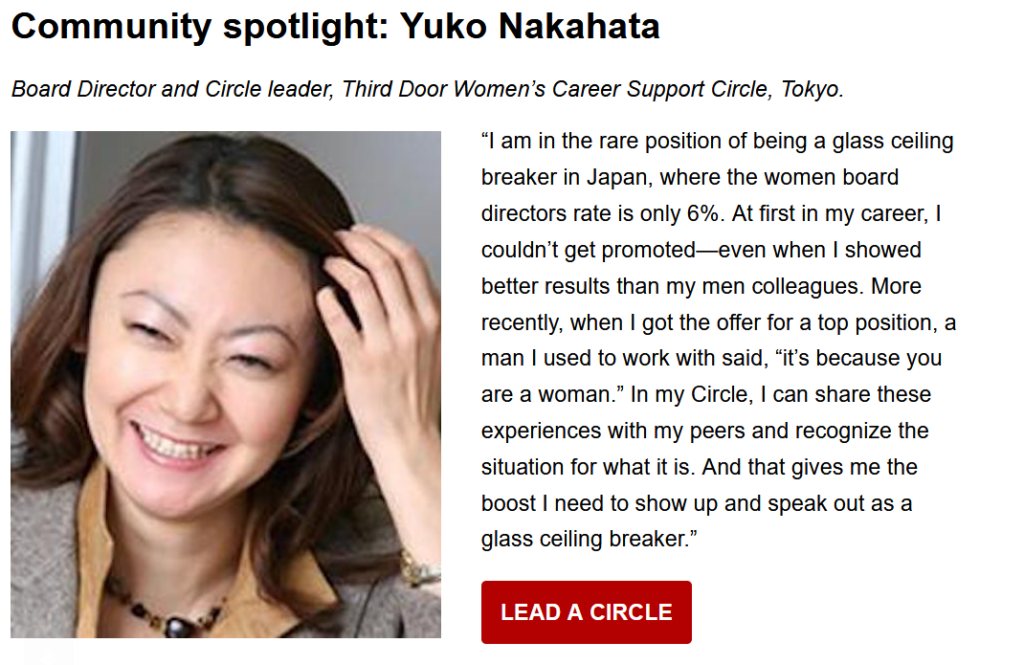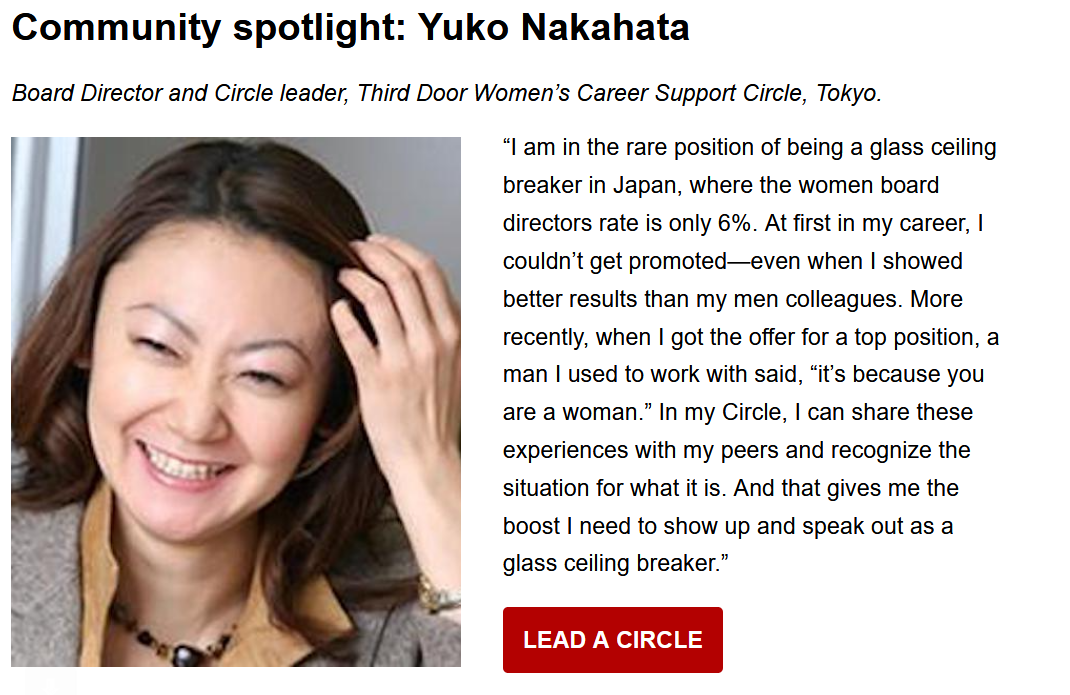When I was reading Alex Banayan’s book, Third Door, I saw this picture in the last chapter.
This is showing the difficulty of female career achievement and felt a massive impact.
Yes, this is a story in the U.S. but we have mutual social issues in Japan.
Then I started the research to understand the recent facts.

I am already in the board position and could say I broke through the glass ceiling. However, I have struggled a lot in my career to achieve promotion when I have needed to compete with male colleagues.
When I started the research, I found this report which has issued by Mckinsey and corporation & Lean In.
Women in the workplace
According to this report, the essential issue is not the glass ceiling but the very first step and they called it “broken rung. ” I remember vividly that I was feeling that I must show the three times results than male colleagues if I want to get the promotion.
I just made decision to support younger generation to avoid my same feeling and show the better way as a role model.
During I join the zoom session with Alex, I have asked the attendees if they have interested in joining the women’s career support circle if I made. I got enough agreement and started the Lean In a circle with the US-based members.
Lean In picked me to introduce on their news letter.

After half year, I got request to start Japanese version. Now it became two circles and running the experience and information sharing to support each other.
I feel it is my social responsibility to keep speaking up about the gender gap fact and support other generations to realize a better society.


